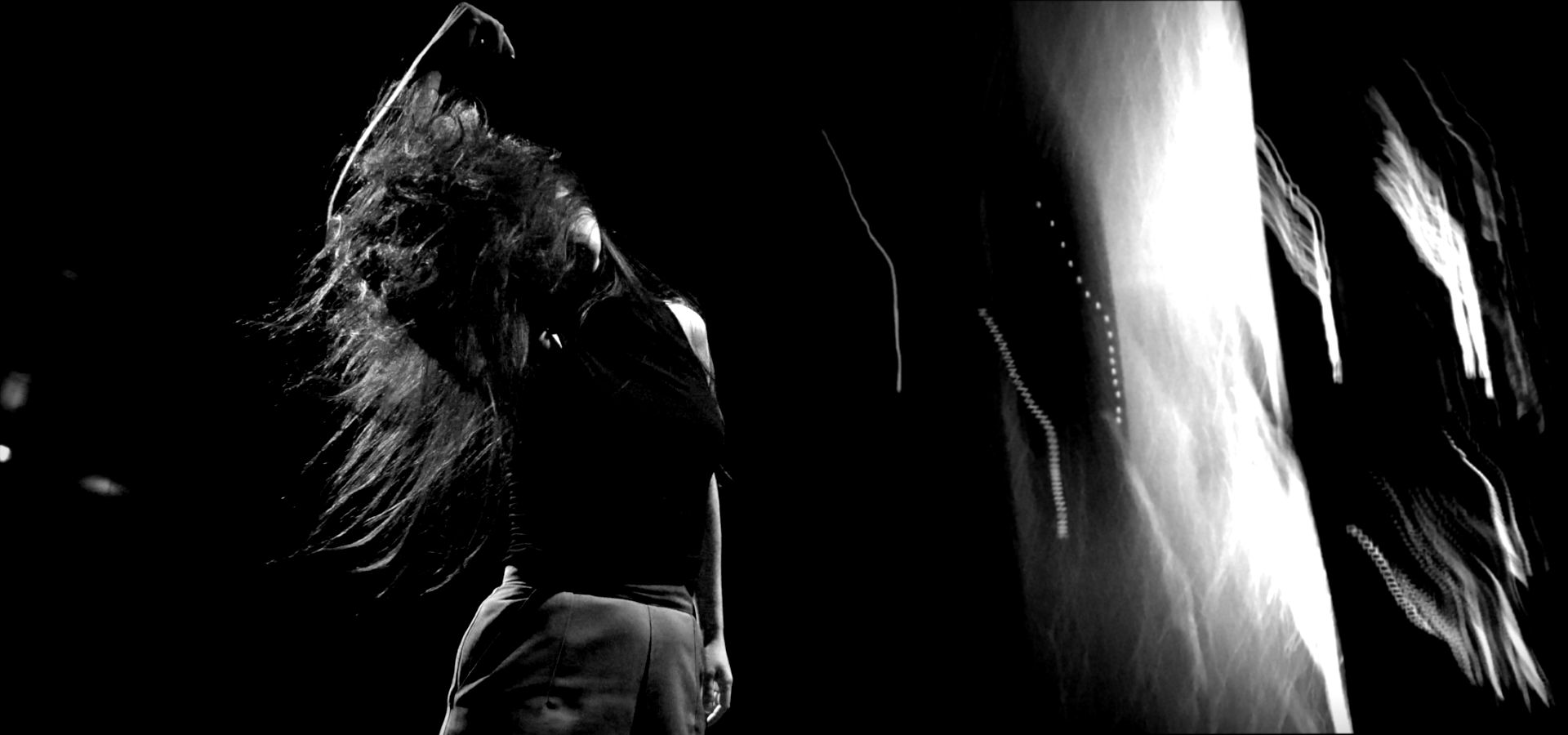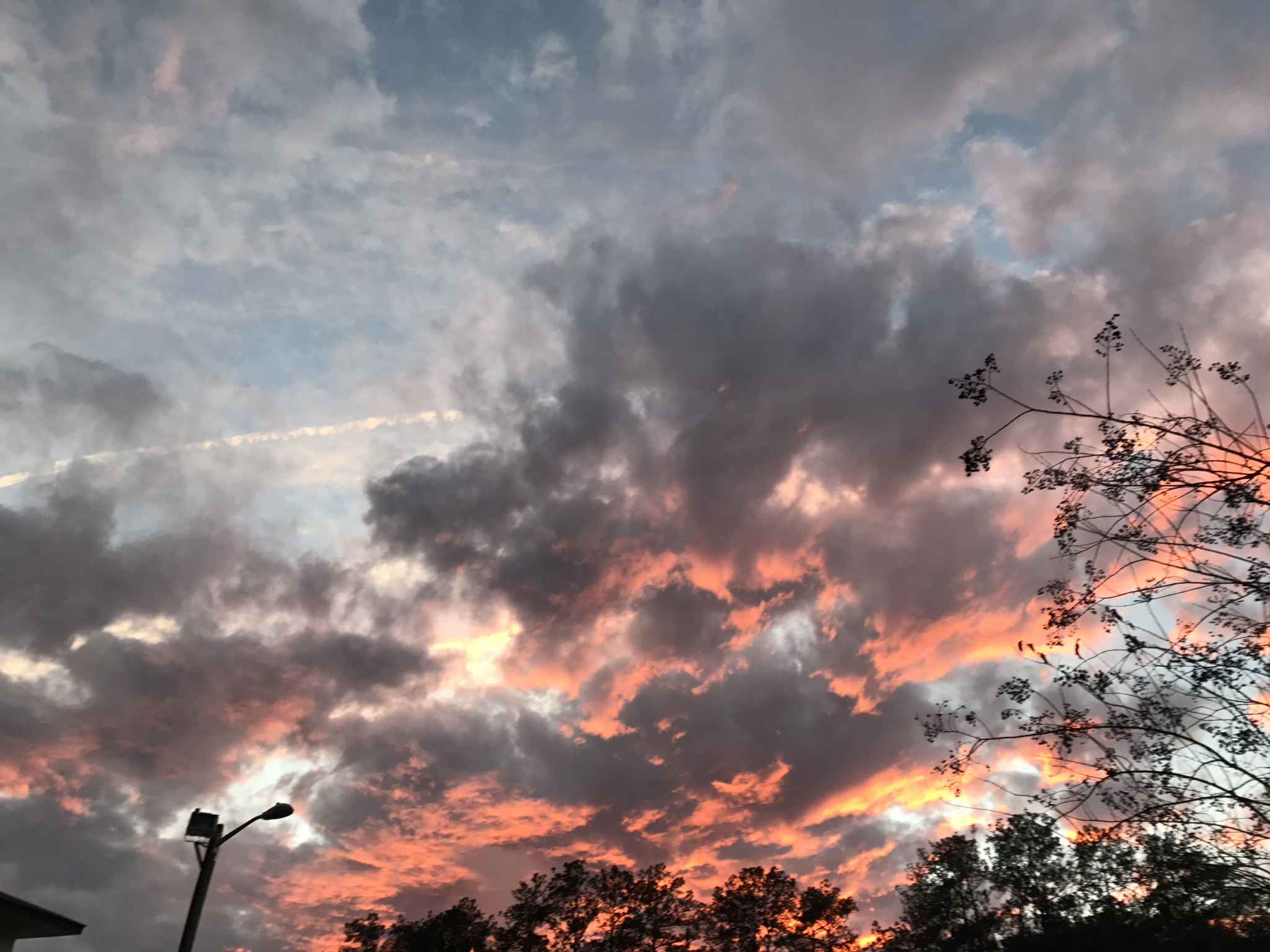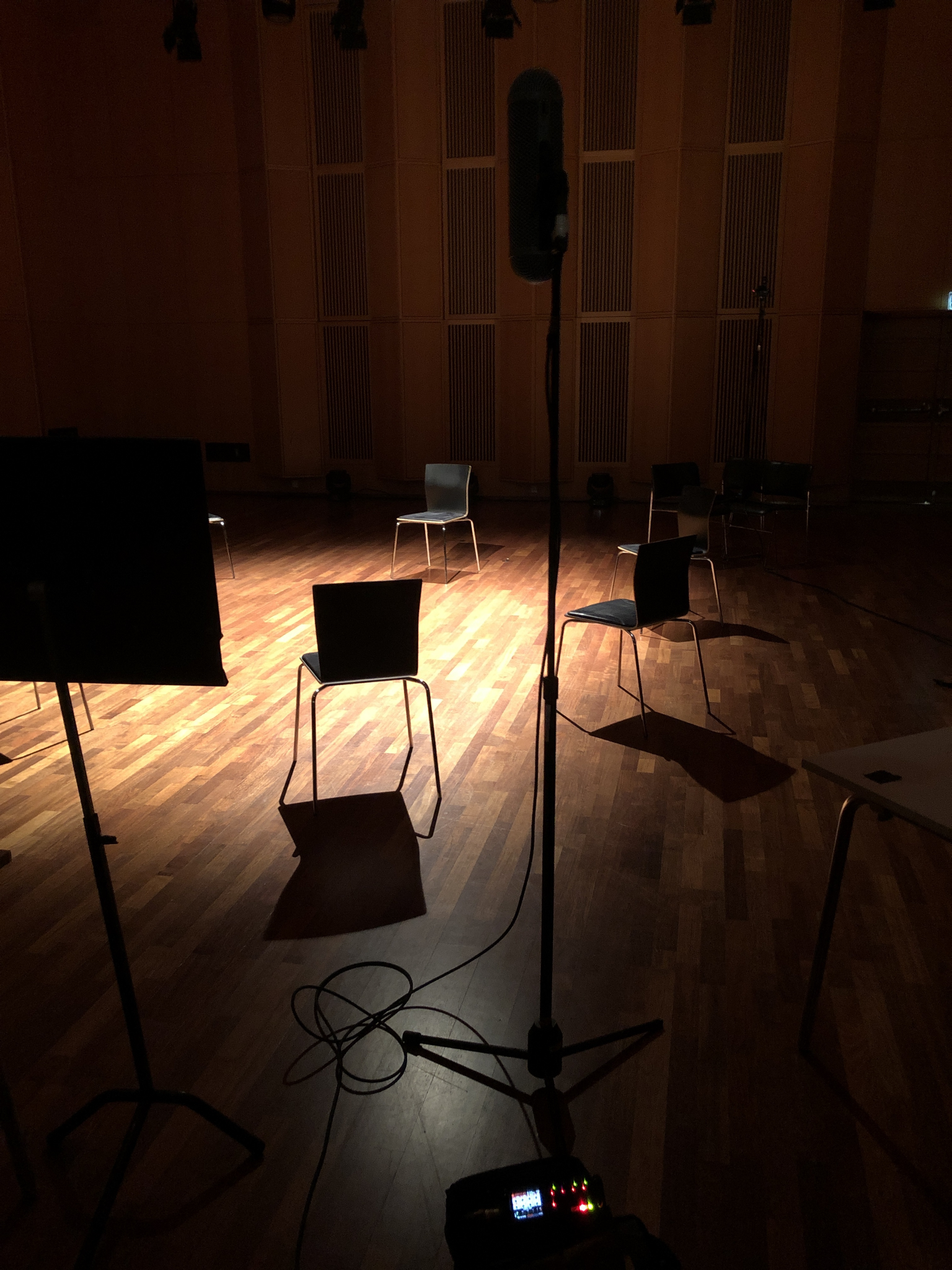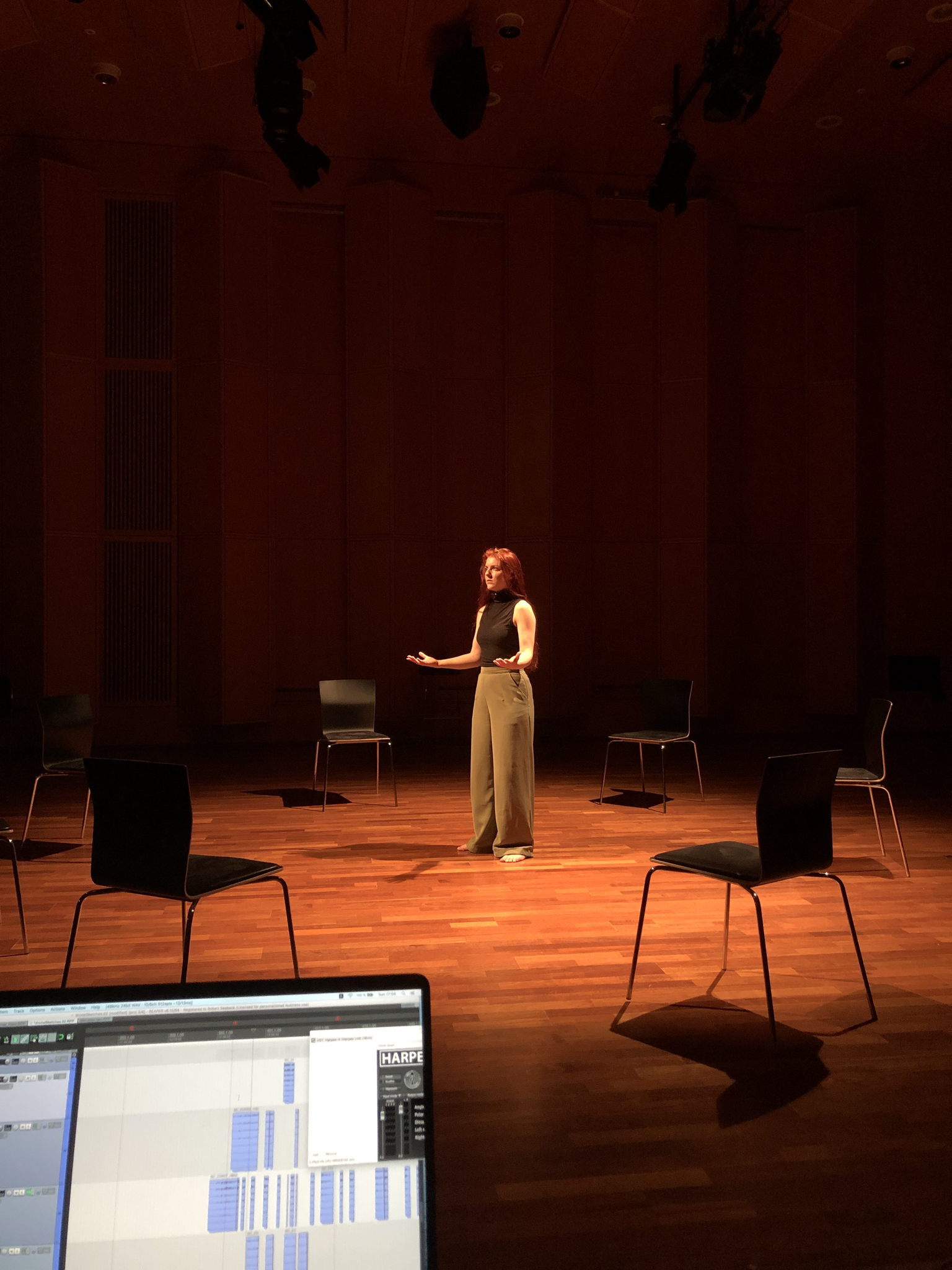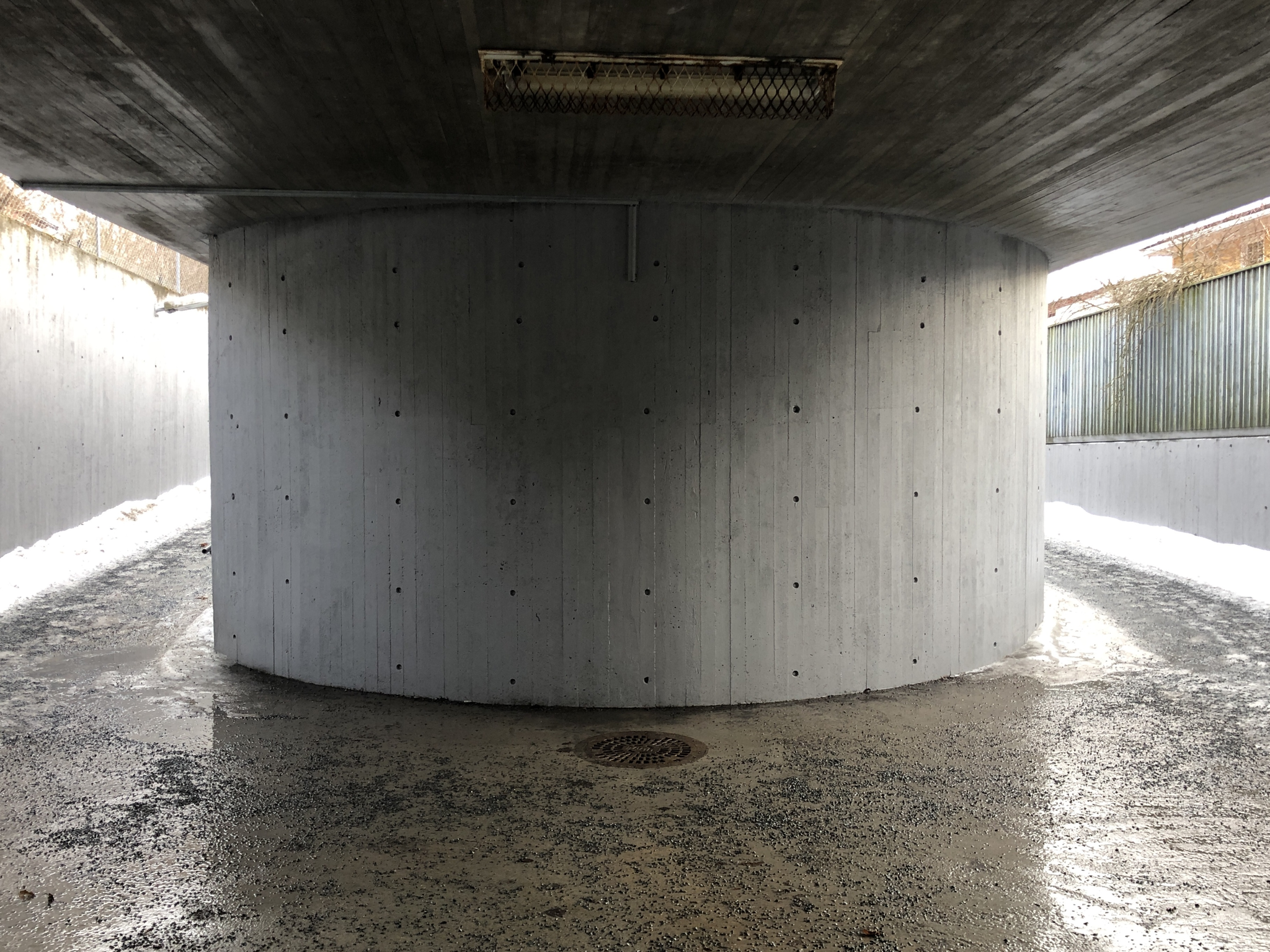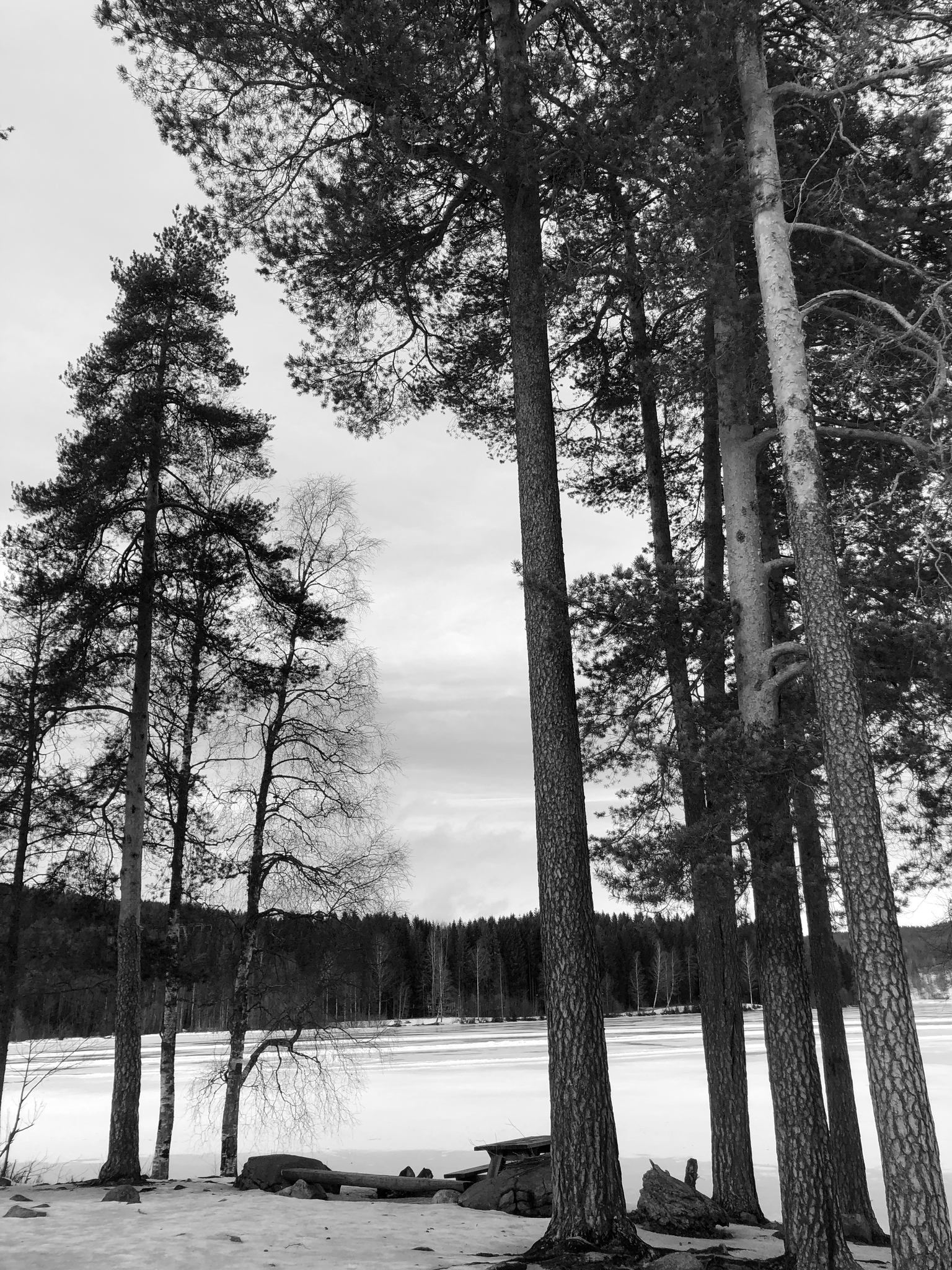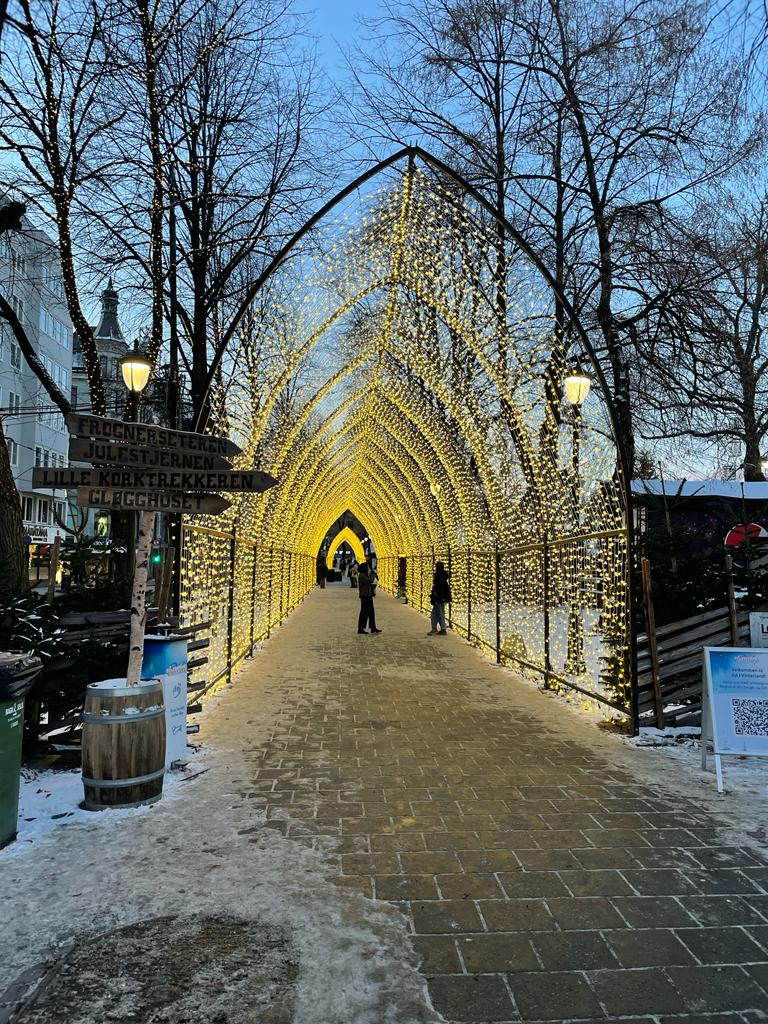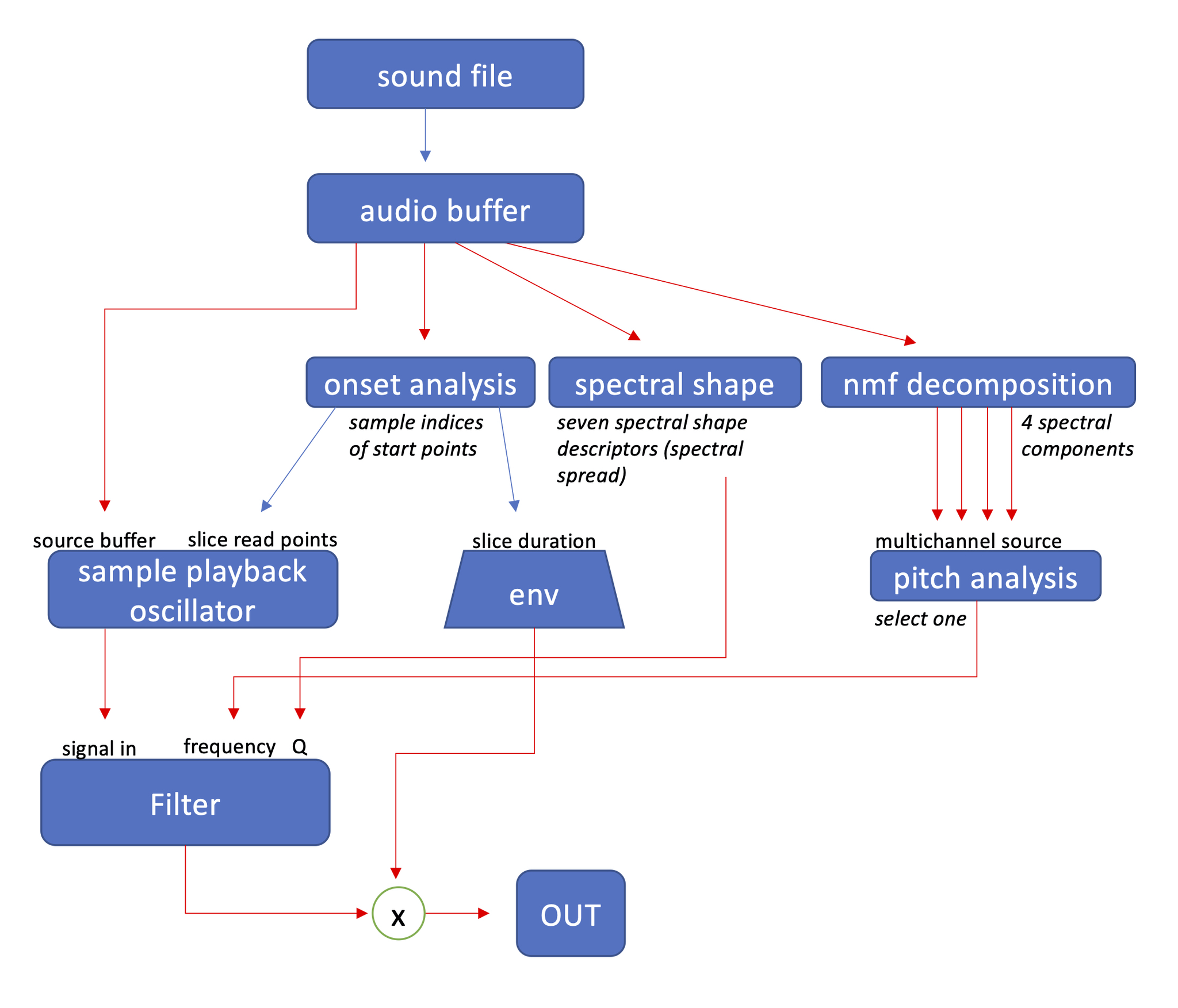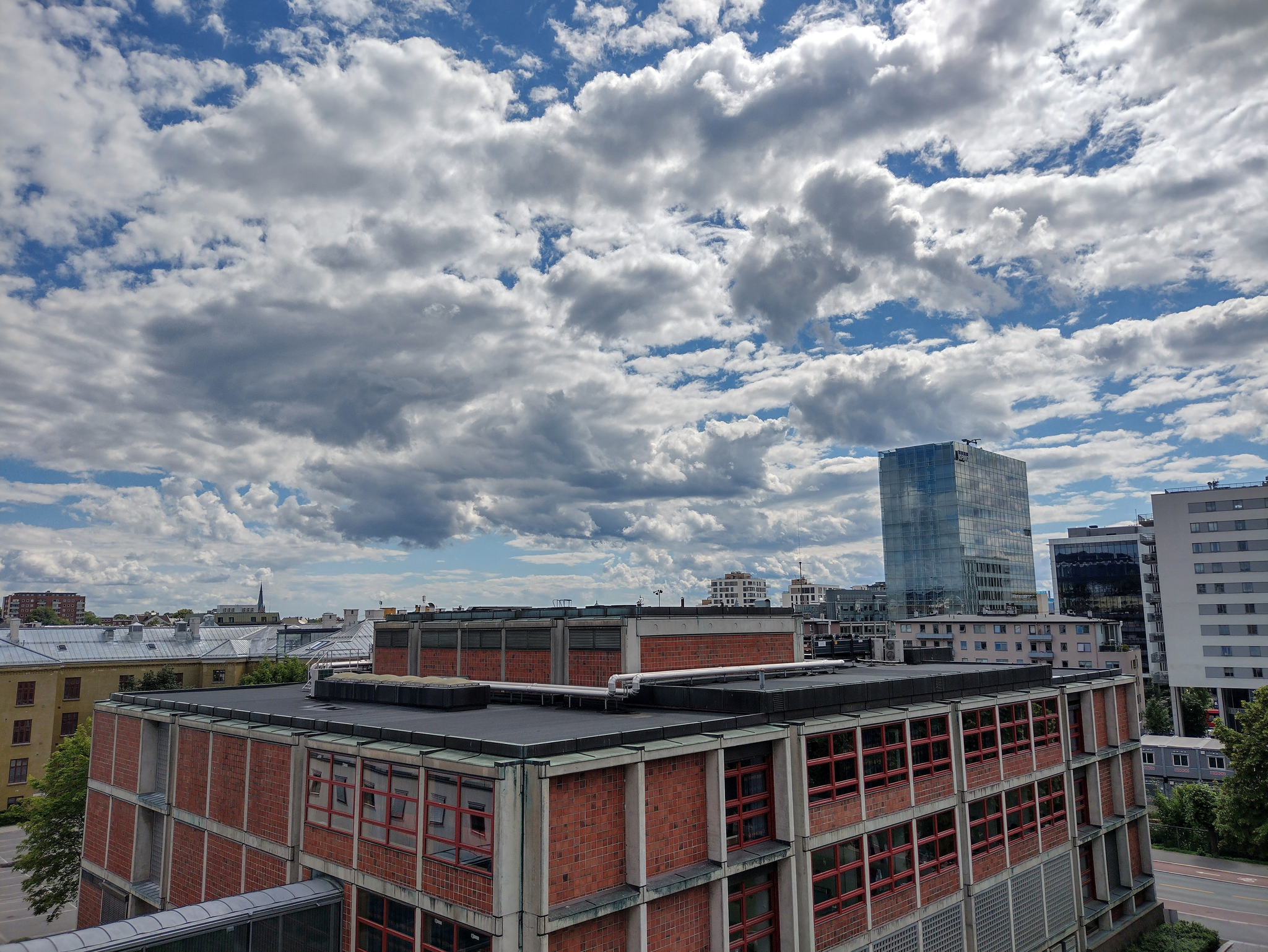3. Acousmatic Works
3.1. City Lines (2021) | for High Order Ambisonics | 07:05
Performances:
10/2/2021: Presence & Pattern Concert, Norwegian Academy of Music (premiere under the original title Sense Field - see Appendix A)
While often taking deconstructed, incomplete, or modified forms, the sounds of City Lines carry traces of my immigration from Florida to Norway through the fall and winter of 2020-21. The work embraces discovery and unexpected change as it moves between states of abstraction and tangibility—similar to the sense of wonder one may experience as a traveler navigating unknown territory in a new environment.
The sense of journey or narrative is carried further by the shifting scenic episodes: footsteps, human encounters, transit, and other blurry evidence of people carrying-on. Many sounds in the piece were recorded on soundwalks in Oslo.
This first effort of my Artistic Research Fellowship was slow to take form after many false starts and tenuous experiments in spatial audio composition using ambisonic techniques. At this stage, I was trying to develop a stable and well-considered methodology after years of limited or inconsistent access to specialized post-production studios and recording equipment. My early experiments in spatial audio synthesis through the Fall of 2020 were ultimately abandoned in favor of simpler methods using DAW plug-ins, outlined in section 2.1. This allowed me to focus on new and exciting possibilities for sound transformation with FluCoMa in SuperCollider. City Lines was completed in March, 2021.City Lines was completed in March, 2021.
An early experiment with FluCoMa onset slicing can be heard in Example 4, also from 1:42-2:15 of City Lines. The source recording is of rain drops falling on an umbrella overhead, close to a pair of mics suspended above my ears. I used onset times from the analysis to address the original file at regular intervals, with a short envelope on each slice. The results are precise enough to present a texture that is measured and musical, but upon closer listening, the noise of the city breaks through along with the clustered imprecision of actual rain drops.
3.2. Still Life (2021-22) | for High Order Ambisonics | 10:30
Performances:
10/2/2021: Presence & Pattern Concert, Norwegian Academy of Music (premiere)
11/19/2021: Student 3D Audio Production Competition, IEM, Graz, AT (received Gold Award)
6/11/2022: Sound and Music Computing Conference, Saint-Étienne, FR
7/5/2022: International Computer Music Conference, University of Limerick, IE
9/17/2023: Being Somewhere Concert, Ultima Contemporary Music Festival, Oslo
Still Life presents an integrated texture of hi and lo-fi, distant and proximate, interior and exterior sound images. The work’s primary sources consist of soundscape recordings from Gainesville, FL, vocal improvisations by mezzo-soprano Marika Schultze, and synthetic sounds made with standard methods.
Collaboration with performers was a component of my original project proposal and timeline, with a plan to compose mixed works as well as acousmatic. Marika contacted me early in 2021, wondering about possible networks in Oslo around experimental music and metal. I proposed a collaboration involving recording and live electroacoustic performance, which evolved into Still Life and the concert improvisation detailed in section 4.1. I was happy to work with a performer who was comfortable in traditional music, extended techniques, and improvisation, which afforded a number of musical and computational logics in the studio and in performance. Spoken and sung voices are featured in much of my work—it is a source I gravitate toward because of the immediacy of emotional impact. Working with Marika felt natural.
Sound field recording became an important asset to the Embodied/Encoded project at the time of composition. Still Life relies on the diffuseness of distant sounds and other aspects of spatial realism to convey feeling (see sensorimotor expressiveness in section 1.3.). I used the SoundField SPS200 with Marika, first recording vocal improvisations in an acoustically isolated studio, then in the reverberant Levinsalen at the Norwegian Academy of Music (NMH) where Marika used electronic textures I had recently composed as a foundation for her performance.
Still Life represents a stylistic departure from all of my previous work, due in part to the austere presentation of source recordings. I was encouraged by my co-supervisor to follow this aesthetic path at an early stage of the composition. The emotional response I experienced when revisiting (or rediscovering) the recording heard in Example 5 was profound, and became the impetus of the piece. Perhaps it resonated so strongly with me—and I can see this now with some distance—because of how it encapsulated my new life of solitude as an immigrant in Oslo, after moving mid-pandemic and enduring numerous shut-downs. Solitude is evoked through a first-person aural perspective, deeply conscious in a still environment, melancholy, gradually overtaken by cathartic desires and re-imaginings of the present. The voice is solo, becoming self-aware, moving across time. I consciously avoided the post-Schaefferian tendency to barrage the listener with gestural archetypes in favor of more restrained forms, coming from a mysterious and personal confluence of presence, memory, and representation.
Still Life Recording Log
1/23/22: stepping through snow and gravel, Holstein, Oslo
DPA 4060 stereo, Zoom H6
1/17/22: crushing snow, Holstein, Oslo
DPA 4060 stereo, Zoom H6
5/16/21: Marika Schultze, Levinsalen, NMH
Soundfield SPS200, Zoom F8
4/12/21: Marika Schultze, Elektrofoni Studio, NMH
Soundfield SPS200, Neumann TLM 103, Zoom F8
12/1/20: apartment soundscape, Sogn, Oslo
DPA 4060 stereo, Zoom H6
10/28/17: floor tom, University of Florida
Neumann km184, Sound Devices 788T
7/17/17: outdoor residential soundscape, Gainesville, Florida (Example 5)
Shure VP88, Sound Devices 788T
Summer, 2017: thunder sounds collected in Gainesville, Florida
Shure VP88, DPA 4060 stereo, Sound Devices 788T
One example of reflexivity embedded in digital process involved mapping the pitch contour of a sung vocal sample to grain frequency in a synchronous granular stream, using the same vocal sample as input. Pseudo-periodic formant oscillations can be heard as peaks generated in the grain stream mirror the pitch deviations of the vocal source. Identifiable qualities remain—traces of presence—but the sound easily shifts into digital abstraction depending on the musical context and the degree of re-scaling of the modulating envelope (Example 6). These variations are already present in the sound source, and as they bleed into other sonic dimensions, they become sources of noise—of mutation—through which the voice is reconfigured to carry the resonances of a different body. In the words of Hayles:
Mutation testifies to the mark that randomness leaves upon presence. When a random event intervenes to affect an organism’s genetic code, for example, this intervention changes the material form in which the organism will manifest itself in the world. … Here it appears as a synthesizing term between randomness and presence to indicate that when randomness erupts into the material world, mutation achieves its potency as a social and cultural manifestation of the posthuman.37
Other experiments were conducted using filters tuned to harmonics of the pitch analysis with just-intoned harmonization of the source. In Example 7, processing was applied equally to each channel of an A-format sound field recording to ensure the signal could be correctly encoded in the next stage of production.
Similarly alienating transformations can be made with glisson synthesis. I used stepped and curved pitch envelopes for glisson events in Still Life. Stepped envelopes jump rapidly between octaves or harmonic multiples, while curved envelopes generate smoother textures, simulating Shepard tones when glissons are large and overlapping. Example 8 demonstrates small glissons at a fast rate—at near fusion, they increase the roughness and bandwidth of the voice.
3.3. Lightness in Transit (2021-22) | for High Order Ambisonics | 10:30
Performances:
10/2/2021: Presence & Pattern Concert, NMH (premiere)
3/8/2023: New Electronic Music Concert, NMH (revised version)
5/9/2023: Música Viva Festival, Lisbon, PT (received First Prize in Música Viva Electroacoustic Composition Competition)
Lightness in Transit (LIT) derives sound archetypes from subway and commuter train recordings made in Oslo. The sonic residue of metal, wind, engines, and movement contribute to the sensual, corporeal experience of the music. Against this backdrop, a voice continually emerges and recedes, oscillating between song-like utterance and digital stasis. Sources were recorded from Nationaltheatret Station, Holstein, and mezzo-soprano, Marika Schultze.
After an initial period of experimentation, my intention for LIT became to mirror the visual and vibrational pulses of trains from different sonic perspectives—as an observer and as a traveler: enclosed, underground, or emerging—and in ways that traverse between fantasy and hyperreality. In the latter case, sound field recordings are presented in raw states, with subtle additions to enhance the scenes such as ephemeral strata in air or sub registers.
Guided by the poetic themes of Embodied/Encoded, the derived sound archetypes could be translated to multiple sources and parameters: those grounded in the acoustic experience and others which distort or exaggerate the acoustic beyond physical boundaries.
Acoustic
· Swell: doppler swells with different lengths of sustain as trains pass by
· Crescendo/glissando: stasis in pitch and volume followed by upward motion in both to slow release (as train departs) (Example 9.1)
· Diminuendo/glissando: opposite or variations of the above (as train arrives) (Example 9.2)
· Transient bursts from air pressure release, doors, metal friction, electricity
Artificial/Derivative
· Shepard tone (Example 10)
· Looping/overlapping glissando (similar to above)
· Crescendo/glissando to plateau: arrival to indefinite sustain or repetition
· Hyper-glissandi: move between unnatural pitch deviations
LIT carries over a number of techniques from the two prior acousmatic works, with some refinements and added functions. Onset slicing is common and the mapping of pitch analysis data to parameters such as frequency in a granular stream, or the playback rate of a sampler. The Shepard tone approximation in Example 10 was achieved by subdividing slices of a train recording into a number of overlapping glissons ascending by octaves. This effect can be heard in the piece in the third large section from 7:12-8:15.
Lightness in Transit Recording Log
1/23/22: stepping through snow and gravel, Holstein, Oslo
DPA 4060 stereo, Zoom H6
1/17/22: crushing snow, Holstein, Oslo
DPA 4060 stereo, Zoom H6
4/27/21: neighborhood construction/machinery, Sogn, Oslo
Soundfield SPS200, Zoom F8
4/12/21: Marika Schultze, Elektrofoni Studio, NMH
Soundfield SPS200, Neumann TLM 103, Zoom F8
3/31/21: commuter trains at Nationaltheatret Station, Oslo
Soundfield SPS200, Zoom F8
3/30/21: T-Bane, underpass near Holstein, Oslo
Soundfield SPS200, Zoom F8
2/19/21: steps/melting snow and ice, Songsvann, Oslo
DPA 4060 stereo, Zoom H6
One new technique for LIT was non-real time NMF, or non-negative matrix factorization, on spectral frames. This is another affordance of the FluCoMa package which decomposes the spectrum of a sound into a number of ‘components.’ The FluCoMa documentation summarizes: “in its basic form, NMF is a form of unsupervised machine learning: it starts with some random data and then converges towards something that minimizes the distance between its generated data and the original.”38 NMF can also be used to isolate spectral components as a mode of ‘source separation.’
Example 11 was made by decomposing a train sample into four spectral components using NMF and assigning them to separate spatial locations. The components are divided further into onset slices and iterated in succession or according to a step pattern. The example here reduces the original four channel spatialization to stereo.
In Example 12, pitch analysis is applied to each slice from a train recording, which are then re-ordered according to average pitch from low to high. The slices are broken down into a number of smaller grains as a mode of time expansion. This example also adds a resonant filter and distortion to the signal chain, continuing methods of reflexive coupling with pitch mapped to the filter center frequency.
Poetic aspects of the piece come from the physical and psychological experience of solo travel. There is a sense of invigoration and excitement when travelling, and anticipation about what might be around the corner. It awakens the senses and a wandering mind. Sometimes, the ‘in-between’ of transit, the way, becomes its own space of meaning. This theme is reinforced in the piece by allusions to walking between enclosed and open-air spaces, encountering different types of spatial envelopment. A nomadic metaphor which emerged from the Shepard tone section beginning at 7:12 is that of forever leaving and never fully arriving: a train departs and is suspended in a state of ‘forever leaving’ until a breaking point at 8:16.
3.4. Skin and Siren (2022) | for High Order Ambisonics | 09:35
Performances:
3/8/2023: New Electronic Music Concert, NMH (premiere)
9/17/2023: Being Somewhere Concert, Ultima Contemporary Music Festival, Oslo
11/18/2023: Music Technology Alumni Concert, Northeastern University, Boston
5/11/2024: Música Viva Festival, Lisbon, PT
What layers of meaning remain when the transparency of a sound recording is intentionally stripped away? Skin and Siren poses a response to this question in its treatment of recordings from percussionist Ingar Zach and field recordings made in Oslo in the Spring of 2022. After the application of digital processes to blur the transparency of sources, peripheral aspects of the acoustic experience remained—spatial profile encompassing proximate and distant fields, reverberation and resonance, ephemeral transients and noise floor—along with the cross-modal sensations which accompany these phenomena.
The work presents dreamlike passages alternating between the corporeal residue of performance (Zach) and fractured city soundscape. Filtered and pitch-shifted resonances from the snare drum and timpani create a harmonic frame for much of the work in addition to resonances extracted from bells ringing at Oslo City Hall. My collaboration with Ingar was initially oriented around live performance, and is detailed in sections 4.2. and 4.3. Recordings for Skin and Siren were extracted from studio sessions in which we improvised freely without any plans. I used a typical condenser mic to receive Ingar’s sound for live processing, and simultaneously recorded the acoustic drum with the SPS200 suspended a few feet above the membrane. I decoded stereo images from the sound field recordings with Harpex for further processing in SuperCollider, which were then re-encoded as virtual ambisonic sources in the piece.
Rough inharmonic timbres were generated by applying glisson synthesis to percussion samples with a stepped pitch envelope, jumping from high to low values of playback rate (Example 13). In addition to the pitch envelope, parameters for frequency (the rate of grain iteration) and spatial location for each glisson affected the resulting sound. In Example 13, glissons alternate rapidly between two positions clustered at the front of the listener.
Another technique for ‘blurring’ the identity of sources was to track the spectral centroid of a source and control the center frequency of a resonant filter through which the source passes; or taken one step further, to split sources into four spectral components with NMF, analyze the pitch of each, and selectively apply the resulting contour again to the center frequency of a resonant filter. A combination of these processes can be heard in the second large section (1:54-3:21) and in Example 14 (with light distortion applied before output). An example signal-flow diagram of this instrument (as it was coded in SuperCollider) is shown in Figure 1. In concept and method, it manifests reflexivity as described in section 2.2.1.
Skin and Siren Recording Log
4/20/22: Ingar Zach, Studio 1, Norwegian Academy of Music
Soundfield SPS200, Zoom F8
3/6/22: bells/sound walk along Stortingsgata, Oslo (Example 14.1)
DPA 4060 stereo, Zoom H6
2/16/22: Ingar Zach, Studio 1, Norwegian Academy of Music
Soundfield SPS200, Zoom F8
As the piece progresses, suggestions of 3D space and physical presence flatten into anechoic digital sonorities: granular, pulsing, and moving. Example 15 is a digitized drum ordered by duration of slices with modulating grain size and grain frequency derived from pitch analysis of the source. Restrained noise modulation and sharp grain envelopes add energy to high partials and subvert the natural tonal balance of the acoustic drum input.
Skin and Siren is more in-line with the notion of being somewhere than any other work of the Embodied/Encoded project. It is about finding beauty in absolute chaos, and losing yourself in a moment by becoming present (in the transcendental meditative sense). The soundscape recording heard in Example 14 elicited a strong emotional response in post-production, much like the one described earlier in Still Life. Rather than presenting this material in a raw state, I found that my digital transformations highlighted the ephemera of the scene, like the tactility of small impulses and emergence of tonal shades. Between periods of being swept away by such fragmented pictures, one encounters concentrated, powerful sonic totalities of high contrast—encapsulating the way that time implodes in moments of becoming present and expands into vast spaces of mind and body.
3.5. Red Light, Greyfield (2022-23) | for High Order Ambisonics | 11:07
Performances:
9/17/2023: Being Somewhere Concert, Ultima Contemporary Music Festival, Oslo (premiere)
Red Light, Greyfield is an imaginary landscape in which alarms sound in unoccupied spaces or spaces under no immediate threat. Source material for the work consists of recordings made around Oslo, notably the air raid sirens heard twice a year throughout the city. These are integrated with samples collected from a chaotic analog synthesizer, and digital synthesis textures from wave terrain (discussed further in sections 4.3-4.4), glisson, and asynchronous granular techniques.
The feeling of the work is inspired by two recurring sensations: the Oslo skyline when it takes the form of distant red lights on tower cranes poking through grey skies, and the air raid sirens heard from different locations in the city. From the right vantage point, the sirens sound and pause in staggered polyphony, revealing a diversity of distant echoic spaces melting together from the listener’s position. From a close perspective, the sirens are ear-shattering, distorted, breaking apart from dissonance and environmental interference. It is a unique and beautiful spatial audio experience, immersive and invasive in scale. Both perspectives are presented in the work – distant at the beginning and close at the end. The slow-burn introductory soundscape gives way over a 4+ minute period to a shrieking wall-of-sound which subsumes all but the echo of sirens.
Sirens and soundscapes were recorded with the Soundfield SPS200, and upsampled to 3OA. The work combines numerous techniques already developed for Embodied/Encoded with the exception of asynchronous granular synthesis. Other works make extensive use of synchronous granular, in which pitch and formant characteristics are controllable. Asynchronous granular uses an aperiodic signal to trigger individual grains, resulting in noisy spectra or irregular pulses. Broadband textures are created with high numbers of grains per second and small grain durations. Example 17 uses a sample from an analog synthesizer and triggers grains with a noise generator, periodically changing the density of grains. I ‘performed’ this instrument with mouse control over grain size and playback point within the sound file, ideally infusing the sound with performative gesture.
Red Light, Greyfield Recording Log
6/14/23: air-raid sirens, NMH, Oslo (Example 16)
Soundfield SPS200, DPA 4060 stereo, Zoom F8
8/19/22: construction site UiO, Gaustadbekkdalen, Oslo
DPA 4060 stereo, Zoom H6
8/16/22: rain/thunder, Sogn, Oslo
Soundfield SPS200, Zoom F8
8/15/22: thunder, Sogn, Oslo
Soundfield SPS200, Zoom F8
6/27/22: SOMA PULSAR-23 organismic drum machine, NMH, Oslo
6/26/22: rain/thunder, Sogn, Oslo
Soundfield SPS200, Zoom F8
6/15/22: SOMA LYRA-8 organismic analog synthesizer, NMH, Oslo
6/8/22: air-raid sirens, Nordberg, Oslo
Soundfield SPS200, DPA 4060 stereo, Zoom F8
5/19/22: construction site UiO, Gaustadbekkdalen, Oslo
DPA 4060 stereo, Zoom H6
1/12/22: air-raid sirens, Sogn, Oslo
Soundfield SPS200, Zoom F8
This material mixed well with granular textures from nature such as rain, wind, and thunder; a foundation for the illusion of the material world dissolving or breaking apart. A metaphoric space of human absence marked by continuing mechanical and natural processes gradually formed from this collection. Also present are recordings of a construction site at a distance, contributing mechanical bursts, striking metal, and high noise-floor.

